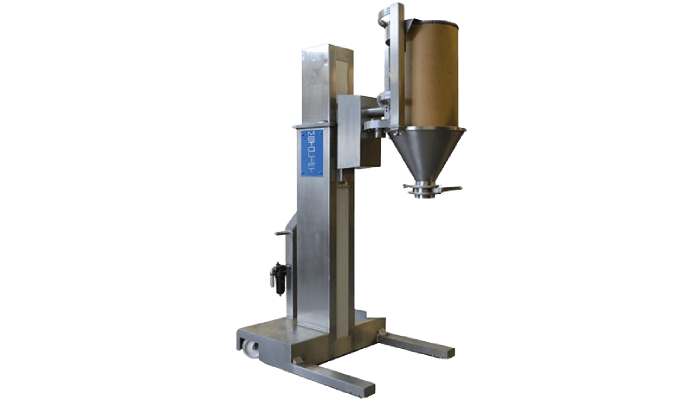Handling bulk materials comes with its own set of safety challenges, such as equipment overload, spills, and repetitive strain injuries. To reduce risks, regular safety training is essential so workers know how to properly operate machinery and handle different materials safely. Keeping equipment in good condition through scheduled maintenance prevents breakdowns that could lead to accidents. Using the right personal protective equipment (PPE) is another key step for protection against hazards. Ergonomic improvements and mechanical aids help lower physical strain on employees. Additionally, streamlining workflows with technology and promoting clear communication supports both safety and efficiency in bulk material handling operations.
Challenges in Bulk Material Handling Safety
Bulk material handling equipment comes with several safety challenges due to the nature and scale of operations. Handling large volumes often risks equipment overload and structural failures, which can lead to serious accidents. Spillage of materials is another common issue, creating slip hazards on work surfaces and potentially causing environmental contamination if not contained properly. Workers face ergonomic risks as well, since repetitive motions and heavy lifting can result in strains and other injuries over time. Equipment without adequate guarding exposes employees to moving parts and pinch points, increasing the likelihood of crush injuries. Dust and airborne particles from the materials pose respiratory hazards, especially when proper controls like ventilation or masks are absent. Poorly designed workflows can cause congestion around equipment, raising the chance of collisions or trips. Inconsistent safety practices often stem from a lack of standardized procedures, while communication gaps between teams can delay identifying and responding to hazards. Maintenance lapses are also a concern, as unexpected equipment breakdowns can create unsafe situations. Finally, balancing the need for operational speed with safety precautions remains a constant challenge, since pushing for faster throughput can sometimes compromise protective measures.
Regular Safety Training for Bulk Material Handling
Regular safety training is essential for handling bulk materials safely. Providing initial and refresher training tailored to specific materials and equipment helps workers understand unique risks and proper handling techniques. Hands-on sessions build confidence and ensure employees can operate machinery correctly under real conditions. Training should include emergency procedures like spill containment and evacuation to prepare workers for unexpected situations. Updating training materials to reflect equipment upgrades and new hazards keeps information relevant. Including hazard recognition exercises improves workers’ ability to spot and respond to potential dangers before incidents occur. Encouraging employees to report unsafe conditions and near misses during training promotes a proactive safety culture. Using clear, simple language and visual aids makes the content accessible to all skill levels. Assessing training effectiveness with quizzes and practical evaluations ensures comprehension and skill retention. Documenting all training activities helps track progress and maintain compliance, reinforcing a workplace environment where continuous learning and safety are priorities.
- Provide initial and refresher training tailored to specific bulk materials and equipment.
- Include hands-on sessions to build confidence in operating handling machinery safely.
- Train employees on emergency protocols including spill containment and evacuation.
- Update training content regularly to reflect equipment upgrades and new hazards.
- Incorporate hazard recognition exercises to improve worker awareness and responses.
- Encourage workers to report unsafe conditions and near misses during training.
- Use clear, simple language and visual aids to enhance understanding across skill levels.
- Assess training effectiveness through quizzes and practical evaluations.
- Foster a safety culture where continuous learning is expected and supported.
- Document all training activities to ensure compliance and track progress.
Maintaining Equipment to Prevent Failures
Regular maintenance is essential to keep bulk material handling equipment safe and reliable. Daily inspections should focus on critical parts such as belts, chains, and brakes to catch early signs of wear or damage. Scheduling weekly and monthly checks helps identify issues before they lead to breakdowns. Using predictive maintenance tools like sensors and diagnostic devices can anticipate faults, reducing unexpected failures. It’s important to keep detailed logs of all maintenance activities and repairs to track patterns and ensure accountability. Maintenance staff should be trained to recognize safety risks during servicing and replace worn or damaged parts promptly to prevent cascading failures. Regular cleaning prevents buildup that can impair equipment function or create hazards. Safety devices like guards and emergency stop mechanisms must be verified as operational during maintenance. Coordinating maintenance times to avoid disrupting production also supports overall safety and efficiency. Following manufacturer guidelines and equipment manuals ensures that maintenance practices align with the equipment’s design and operational needs, helping to maintain safe working conditions.
Selecting and Using Proper PPE
Choosing the right personal protective equipment (PPE) starts with conducting task-specific risk assessments to identify the hazards workers face during bulk material handling. Depending on the risks, this may include gloves to protect against cuts or abrasions, helmets for impact protection, goggles to shield eyes from dust and debris, and respiratory protection when airborne particles are present. It’s important not only to provide these items but also to train employees on how to put them on, take them off, and maintain them properly to ensure effectiveness. Regular inspections should be scheduled to check for wear, damage, and proper fit, replacing any PPE that is damaged or past its expiration date without delay. Making PPE easily accessible at workstations encourages consistent use, while tailoring PPE selection for comfort helps workers wear it for longer periods without discomfort. Educating staff about the limitations of PPE is vital so they understand when additional safety measures are necessary. Keeping detailed records of PPE distribution and usage supports inventory management and helps identify trends or needs. Finally, integrating PPE checks into daily safety routines and supervisor inspections reinforces a culture of safety and accountability on the job.
Ergonomic Solutions to Reduce Injuries
To reduce injuries in bulk material handling, it is important to analyze tasks for motions that cause strain or repetitive stress. Designing workstations to support neutral postures helps minimize bending and twisting, which are common sources of injury. Mechanical aids like conveyors and lift assists can significantly reduce the need for manual handling, lowering the risk of muscle strain. Rotating job assignments prevents workers from doing the same repetitive motions for long periods, which helps limit cumulative injuries. Adjustable equipment that fits different body sizes and strengths ensures workers can maintain safe postures during operations. Training employees on safe lifting techniques and posture awareness reinforces good habits and reduces injury risks. Encouraging regular breaks during repetitive tasks helps lessen muscle fatigue and maintain alertness. Monitoring injury reports allows identification of high-risk tasks so ergonomic improvements can be targeted effectively. Involving ergonomic experts early in the design of equipment and processes ensures safer workflows from the start. Using ergonomic tools or software to simulate workflow layouts helps optimize workstation setups before implementation, enhancing safety and comfort for workers.
Optimizing Material Flow for Safer Handling
Mapping current material flows is an essential first step to improving safety in bulk material handling. By identifying bottlenecks and unnecessary movements, companies can rearrange layouts to create clear, unobstructed paths for equipment and materials. For example, redesigning the workspace to separate pedestrian walkways from bulk material transport routes reduces collision risks and improves overall safety. Using conveyors and automated sorting systems helps minimize manual handling steps, which lowers the chance of ergonomic injuries and accidents. Sensors and real-time tracking tools provide ongoing flow monitoring, enabling quick detection of delays or blockages that could lead to unsafe conditions. Balancing load distribution prevents overloading equipment or storage areas, which reduces the risk of structural failures. Standardized loading and unloading procedures streamline operations and make tasks more predictable, helping workers operate safely and efficiently. Scheduling material handling during off-peak times also cuts down on congestion, lowering the chances of accidents caused by overcrowding. Training workers on any changes to material flow and proper staging ensures everyone understands how to maintain smooth, safe operations. Regularly reviewing and adjusting flow patterns lets organizations adapt to shifting production demands while keeping safety a priority.
Using Technology and Automation to Improve Safety
Integrating technology and automation into bulk material handling operations can significantly reduce safety risks. Robotic loaders and automated guided vehicles (AGVs) limit the need for manual labor in hazardous areas, cutting down on injuries related to physical strain and accidents. Software tools for inventory tracking and equipment scheduling help prevent overloads by ensuring materials and machines are managed within safe limits. Installing sensors on equipment allows real-time detection of faults or unsafe conditions, enabling immediate intervention before issues escalate. Machine learning can analyze collected data to predict maintenance needs, reducing unexpected breakdowns that might cause dangerous situations. Automating repetitive tasks further reduces workers’ exposure to hazardous environments, lowering the risk of ergonomic injuries and accidents. Digital communication platforms facilitate quick reporting and response, ensuring safety concerns are addressed promptly. Cameras and remote monitoring systems allow supervisors to oversee operations without being physically present in potentially risky zones. Regularly updating technology ensures the latest safety features and compliance standards are met, maintaining a safer workplace. It is also essential to train staff on safely interacting with automated systems and emergency procedures to handle unexpected events effectively. Periodic evaluations of how technology impacts workflow and safety metrics help organizations refine their approach and maximize benefits.
Improving Communication and Coordination
Effective communication is crucial for improving safety with bulk material handling equipment. Establishing clear protocols for reporting hazards and operational issues ensures problems are addressed promptly before they escalate. Utilizing two-way radios or digital platforms allows teams to stay connected in real time, which helps prevent misunderstandings and delays during critical operations. Regular safety meetings provide a space to review incidents, share lessons learned, and reinforce best practices, keeping safety top of mind for all workers. Coordinating shifts and task assignments carefully avoids overlap and confusion, reducing the risk of accidents caused by miscommunication. Visual signage and alerts serve as constant reminders of hazards and workflow changes, supporting situational awareness on the floor. Assigning specific safety roles and responsibilities creates accountability, making sure safety-related tasks are completed consistently. Encouraging open dialogue and teamwork helps workers feel comfortable raising concerns, which can uncover hidden risks before they cause harm. Documenting communication procedures and training all employees on them ensures everyone knows how to act and report issues effectively. After incidents, conducting debriefs helps identify communication gaps and improves future coordination to prevent repeat problems. Leveraging technology to track task completion and follow-up keeps teams aligned and ensures safety actions are carried out thoroughly. For example, using a digital checklist that updates in real time can alert supervisors if a safety step is missed, allowing immediate corrective action. Overall, strong communication and coordination create a safer, more organized environment that supports both worker well-being and operational efficiency.
Using Data for Continuous Safety Improvement
Collecting data on incidents, near misses, and equipment performance helps create a clear picture of safety risks in bulk material handling. By analyzing trends in this data, companies can spot recurring hazards or weaknesses in processes before they lead to serious accidents. Setting measurable safety goals based on these metrics allows organizations to track progress over time and adjust their strategies as needed. Worker feedback is also essential in this process, offering practical insights that numbers alone might miss. Software tools with real-time dashboards and alerts can highlight safety concerns immediately, enabling faster responses. Regular data reviews during safety committee meetings help prioritize actions and keep everyone focused on the most pressing issues. When findings show areas for improvement, updating training programs and procedures ensures that lessons learned translate into safer behaviors. Comparing performance against industry standards offers useful context and motivation to improve further. Promoting a culture where data is transparent and used for learning, not blame, encourages honest reporting and continuous improvement. Documenting and sharing safety successes reinforces the value of these efforts and keeps the workforce engaged in maintaining a safer workplace.
Combining Safety with Efficiency in Bulk Handling
To successfully combine safety with efficiency in bulk material handling, it’s important to embed safety checks into daily workflows without causing downtime. Designing processes that minimize manual handling helps reduce injury risks while keeping material flow steady. Leveraging technology like automated alerts and emergency equipment shutdowns can promptly address hazards without halting operations. Training workers on techniques that promote both safety and productivity ensures they understand how to work smarter and safer. Scheduling should be optimized to balance workload, preventing fatigue-related mistakes that compromise safety and output. Clear, streamlined communication channels allow quick resolution of safety concerns without interrupting production. Continuous improvement cycles that focus on both safety and efficiency help identify areas for refinement. Tracking key performance indicators that reflect safety performance alongside operational speed creates a balanced view of progress. Encouraging employees to contribute ideas fosters a culture where safety improvements do not come at the expense of efficiency. Finally, aligning management goals to support this dual focus creates an environment where safety and efficiency are not competing priorities but complementary objectives.

Mary Burns is a dedicated writer focusing on health and fitness topics. With a passion for promoting wellness and vitality, Mary shares her knowledge and expertise through engaging and informative blog posts.




